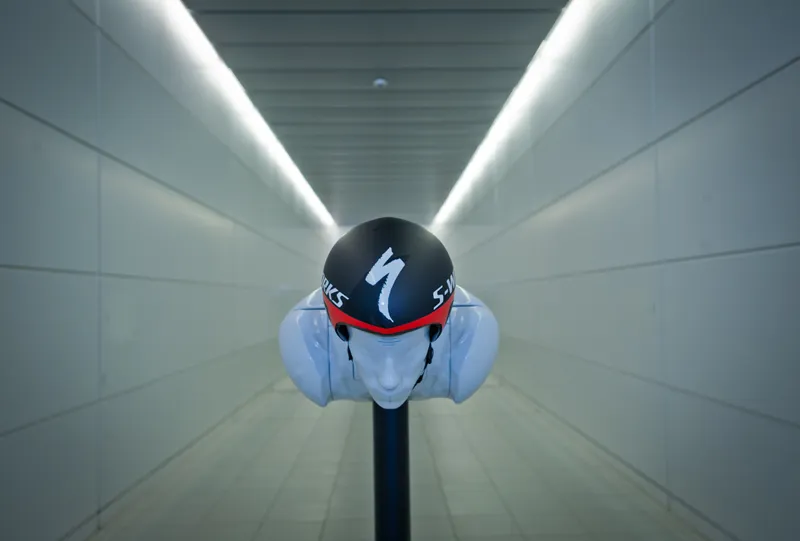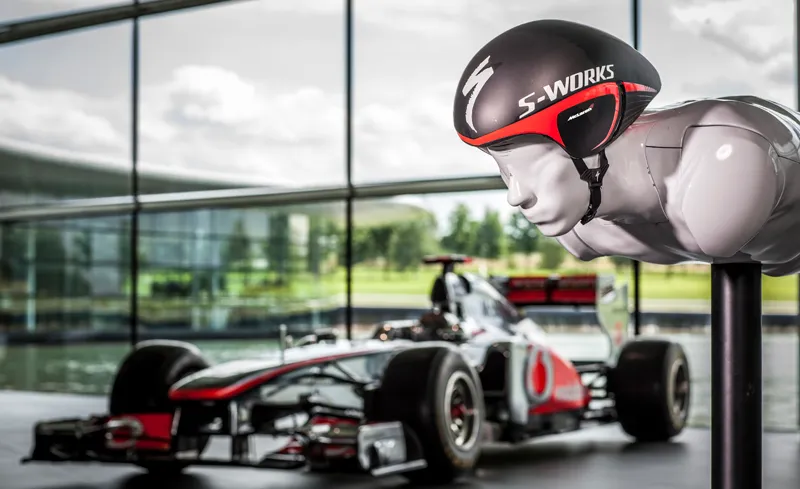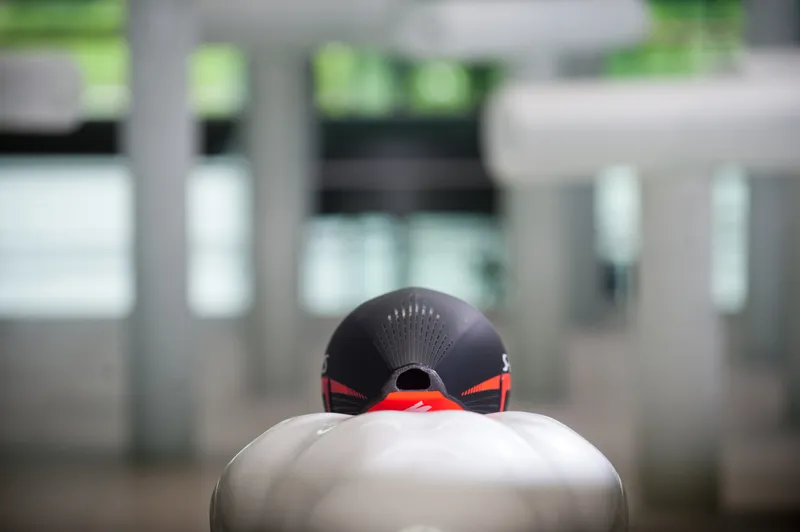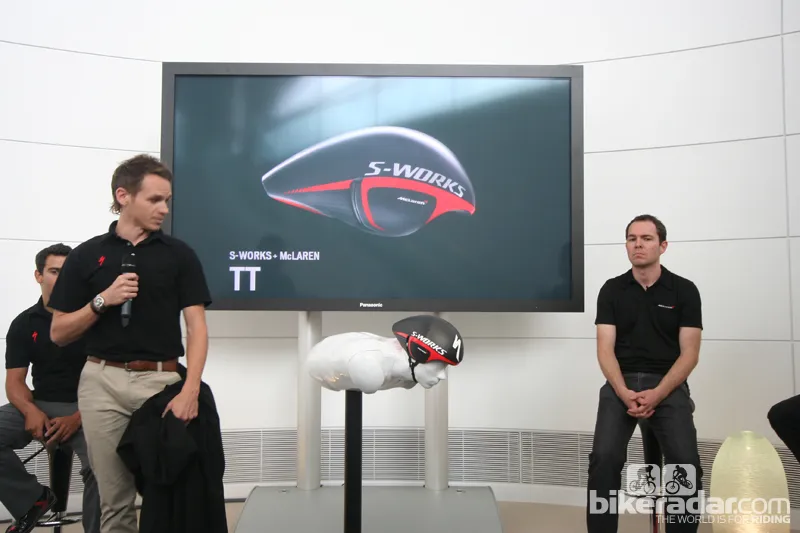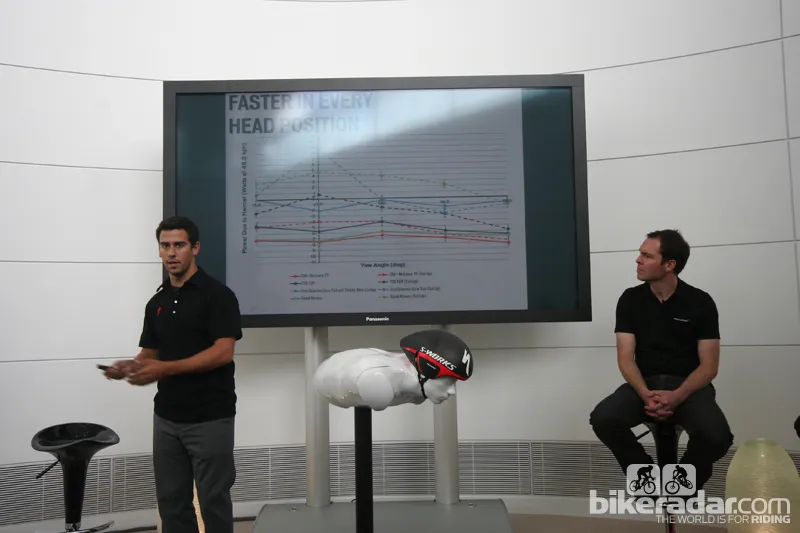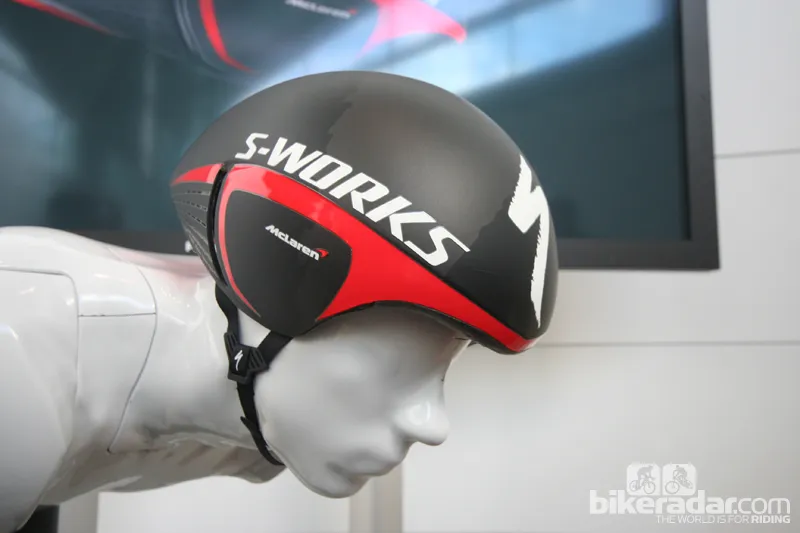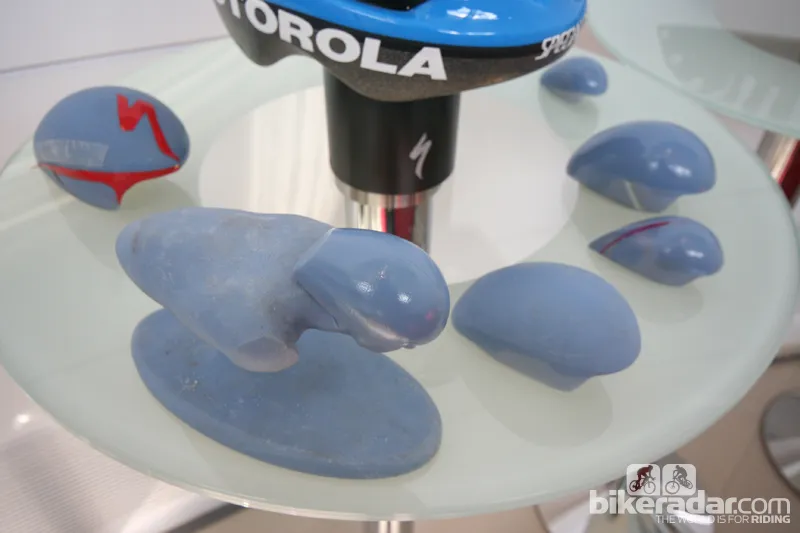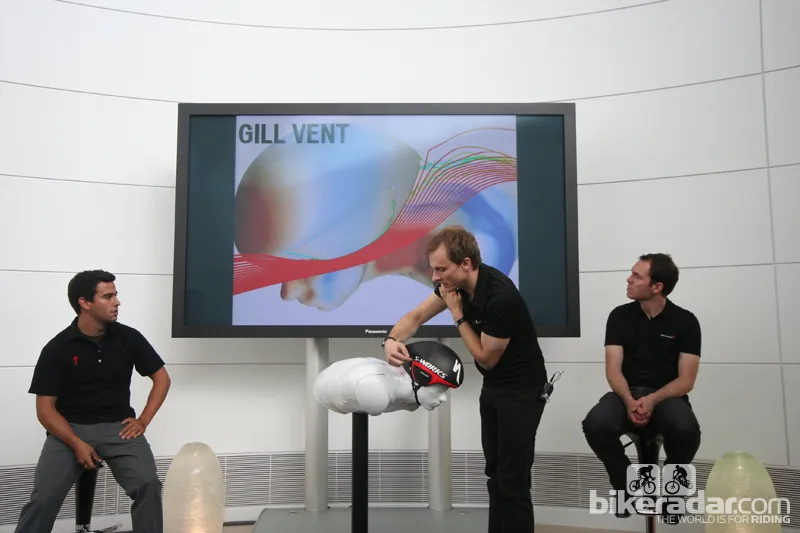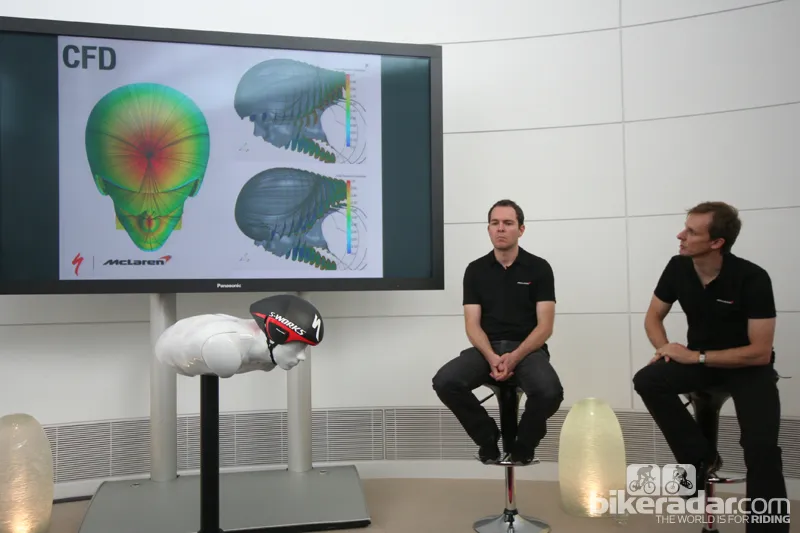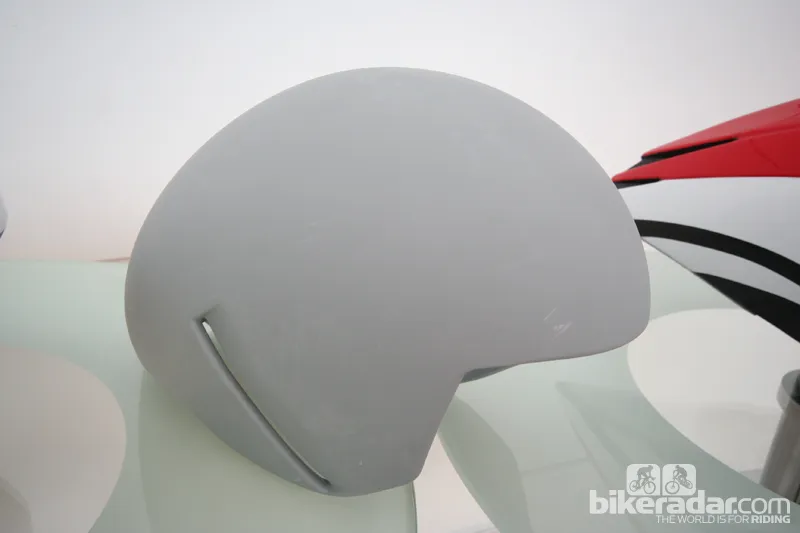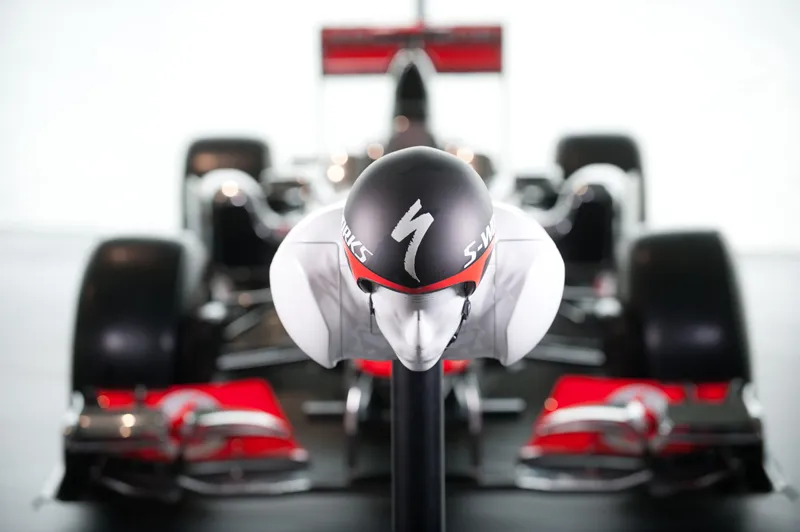After the success of Specialized and McLaren's first team-up, on the Venge road bike, the partners quickly set to work on their next venture – the S-Works McLaren TT helmet.
The aerodynamic time trial/triathlon helmet was unveiled at McLaren's UK headquarters recently and BikeRadar was there to get the low down. The S-Works McLaren TT helmet will be ridden by Omega Pharma-Quick.Step world champion Tony Martin and his teammate Levi Leipheimer at the Tour de France prologue today.
In the arena of bike aerodynamics, the importance of a helmet that truly performs can’t be understated. With a team headed up by Mark Cote, Specialized’s chief aerodynamicist, and Duncan Bradley, design director at McLaren Applied Technologies, the brief was to consider where Specialized were at regarding helmet design, while resetting the button on what needed to be achieved.
“We collected together every commercially available time trial helmet on the market,” explained Cote. “These went through a complete aero testing breakdown. From this we could see which helmets performed well in the wind tunnel and [it] allowed us to assess the standards we needed to exceed.”
Initially, the design team needed to find just how much variation happens when a helmet is being used, not only in respect to the prevailing weather conditions – wind, speed, topography, distance and so on – but with regard to the rider. No matter how disciplined a rider is in maintaining the optimum position (TT world champion Tony Martin was a key rider in the design’s development), the effects of fatigue, form and the bike will all have an influence on the rider’s head position. That means the helmet has to be as slippery as possible, regardless of the orientation of the cyclist’s head.
This is where McLaren’s Formula 1 expertise came into play. They have years of experience at the cutting edge of understanding aerodynamics, so topography, pitch, yaw and wind variance all came into the equation when developing a shape.
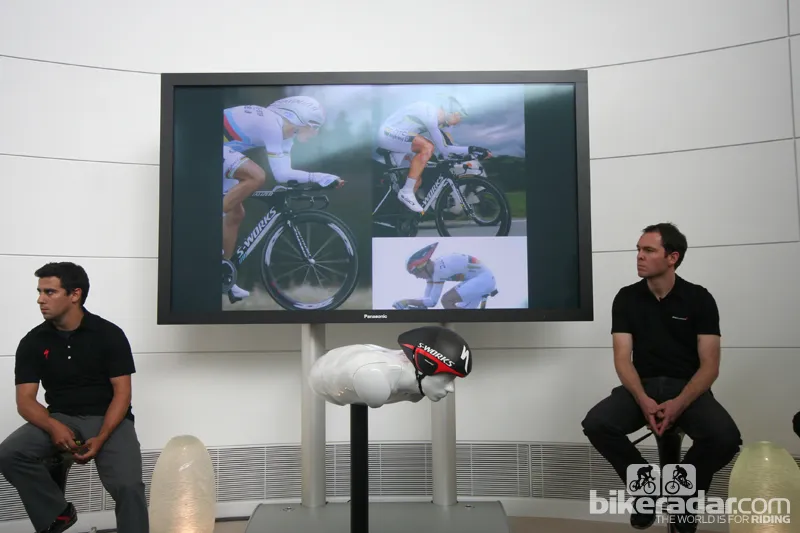
These shots of Tony Martin show just how much a rider’s head moves during a time trial
The development process
The team have been flat out on the project, with the aim being that both Tony Martin and Levi Leiphiemer will be using the helmet as the Tour de France prologue kicks off in Liege, Belgium, today. Since last June, the design team have prototyped and tested 60 different designs.
“That meant we had to throw out plenty of preconceived ideas on TT helmet shapes,” said Mark Cote. “For us, that meant having complete faith in the success of the design.”
For the testing process, Specialized also developed a complete modular mannequin that could replicate a rider’s position perfectly. The model was nicknamed ‘cricket’ and has a multitude of interchangeable body parts, offering a massive range of adjustment.
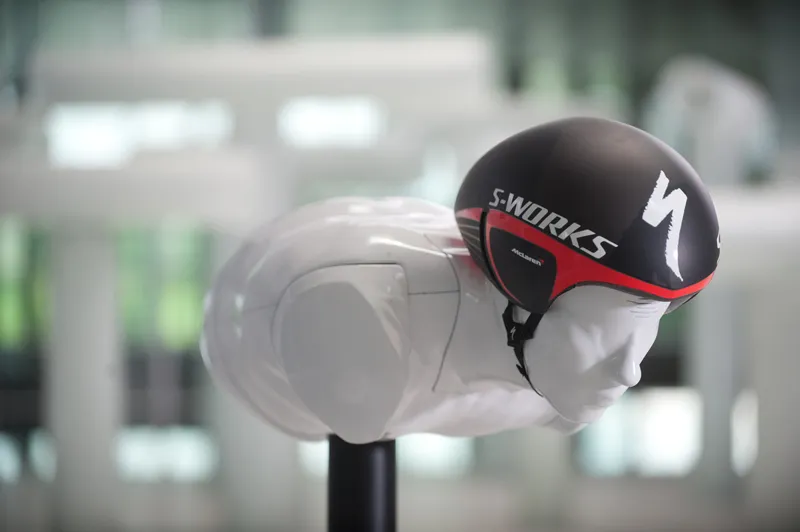
The S-Works McLaren TT helmet shown on the highly adjustable ‘cricket’ mannequin
The development was approached with a similar timetable to McLaren’s car design. Initially, it’s all virtual reality studies, using McLaren’s expertise in computational fluid dynamics (CFD). Once the shape and innovative features reached the point that the team were happy with them, a full-scale clay model was constructed, fitted to ‘cricket’ and taken into the wind tunnel.
After much more development, the first prototypes could then be tried and tested out on the track. This information was then correlated over a five-month period, measuring the actual figures against those from the CFD modelling. As Duncan Bradley explained, “This is so the tests can be repeatable and further the team’s computational research.”
It’s got gills
The key features on the new helmet are the ‘gill’ vents. These unassuming, vertically aligned holes sit behind the rider’s ears on the helmet sides, and are linked through to the tail’s exhaust port. These work in tandem, pulling air from the sides and out through the tail, smoothing the airflow and increasing ventilation.
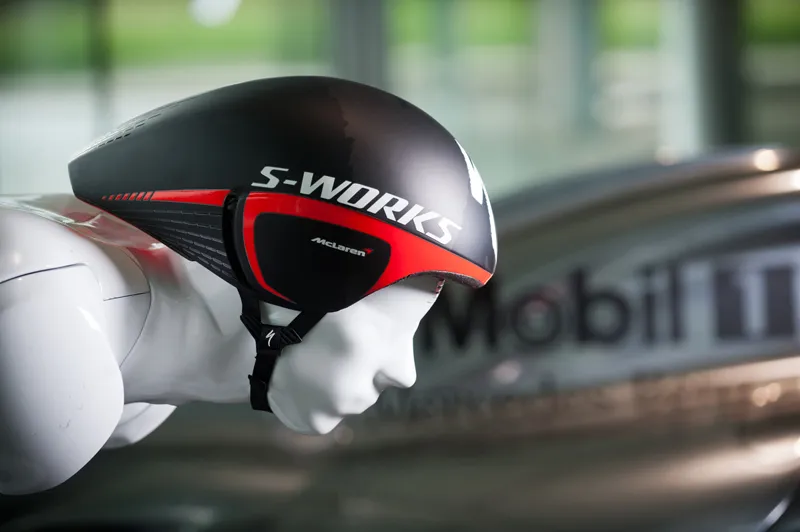
The S-Works McLaren in side profile, showing the ‘gill’ vent behind the red ear line
Mark Cote said the biggest challenge wasn’t what the helmet was doing on its own but that it had a massive effect on how air hits a rider’s shoulders and torso. The helmet helps separate air hitting the shoulders, aiding the pressure difference by smoothing the side flow (with the gill vents) and sucking in ‘dirty’ air (turbulence).
“The inside of the helmet is as important as the outside,” McLaren aerodynamicist Matt Williams explained. “Think of it in terms of engine management on an F1 car (cooling in tandem with aero performance) and the same is true of bicycle helmet design.”
The figures
Tests have shown that the S-Works + McLaren TT helmet offers a 0.2-0.5 second advantage per kilometre (2-5W) at a speed of 48.3kph (30mph) compared to the Specialized TT3, and up to 0.8 sec/km advantage versus not wearing a helmet at all.
Specialized briefly showed test results for the S-Works + McLaren TT helmet versus all the other helmets on the market and - you guessed it - it was better. For example in direct comparison to Giro’s Selector (in all configurations) it again offers a 0.5-0.6 sec/km advantage. The range of time gains depends on whether the helmet is being ridden tail up or flat, and the relative direction of the wind.
Put that into context of the Tour and that’s a 3.5 second gain over the prologue, and more than 20 seconds in the later 53km time trial. Gains like that could well be the difference between winning and losing. We'll see later today whether Tony Martin can realise those gains in the prologue.
Availability
No prices have been confirmed for the new S-Works yet, and Specialized are aiming to have their top-class riders wearing it first – so far, only enough have been constructed to satisfy that demand. They have, however, confirmed that the S-Works will be available in very limited numbers worldwide in the early part of 2013.
